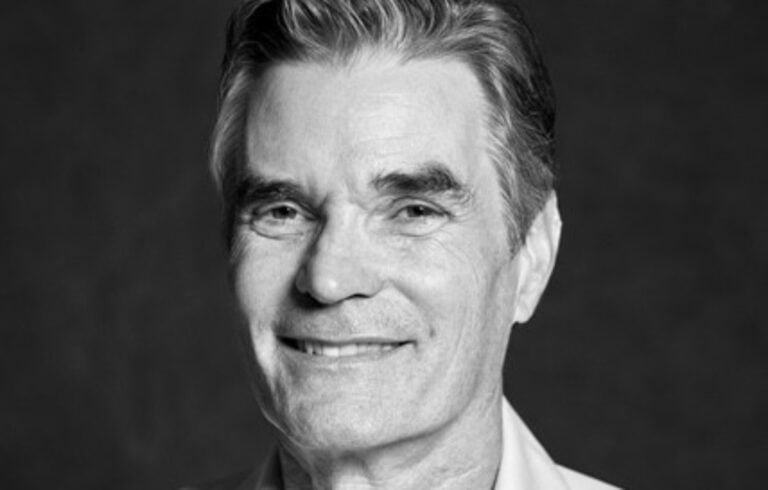

As nuclear-trained engineer on a submarine, Richard Milam worked with some incredibly smart people during his time in the U.S. Navy.
“One of the officers on the boat created the artificial intelligence [that was eventually used by] Sun Microsystems. Another became the president of the company and lobbies for the nuclear industry,” he recalls.
Working with these kinds of people inspired Milam to get “more skills,” as he puts it. Thus, Milam got a degree in computer science, developed a background in engineering, worked for the guy that invented the automated teller machine, and dabbled in bank software sales.
This all led him to his current role as founder and CEO of EnableSoft, an Orlando-based software firm that has a developed scalable robot process automation (RPA) technology (called Foxtrot), primarily for the finance industry.
Opportunities
When Foxtrot came into his head, Milam was trying to solve a business problem for financial institutions. The institutions needed to key in account information into their computer systems from failed savings and loan associations (S&Ls), which they were acquiring after the S&L crisis of 1995.
The application of the software has gone well beyond that, allowing people to run automated data entry tasks, such as inputting account information. This eliminates repetitive work for employees, allowing them to focus on more productive tasks. Most of its customers are in finance, but there are those in healthcare, manufacturing, and other industries.
Submit for Patriots in Business. Do you know any businesses that lead our nation in supporting active duty military members, veterans and their families & exemplify the values of Duty, Honor & Country? Nominate here.
For most of his time as CEO, Milam has had to educate the customers that not only does this RPA technology exist, but it works. Today, its experience has helped EnableSoft gain an advantage over its competitors.
“We’re probably the only company that can say with over 500 financial institutions as customers, we’ve actually bent the efficiency curve in an industry. Our average bank size is $1-10 billion, in that range, the average efficiency ratio is 55 percent documented. Our customers, we can document it’s 50%. So we’ve boosted the efficiency by 10 percent,” he says.
Moreover, Milam sees even bigger opportunities ahead in the RPA movement, with companies less likely to offshore manual processes and more likely invest in this kind of technology. “Nobody wants their data leaving the building, let alone the country anymore,” he says. ‘Most middle market CEOs and businesses didn’t even know this exists. They’re starting to get educated.”
Challenges
In fact, one of the biggest challenges Milam faces as CEO of EnableSoft is a matter of education. Not just with potential customers of RPA’s potency, but the general public who thinks implementing robotics will cause people to lose their jobs.
“I haven’t observed it in my 23 years…that doesn’t mean it doesn’t happen, but most of the time, there’s plenty of work to do when companies can free up people, they got other things for them to do,” he says. Over time, he’s seen these discussions happen less and less, because people are understanding the realities of growing a business in this economy. But it still comes up.
There’s also a lot of noise, Milam points out, regarding artificial intelligence, which can scare and confuse potential customers. Another challenge is finding talented people to work in a cutting edge environment, similar to the one they’re building at EnableSoft.
“You got to always have a personnel and recruiting plan, and make sure you get the image of your company and the values of your company out in the marketplace so that you become an attractive place to work,” he says.
Turn the Ship Around
Over the years, Milam has slowly evolved his leadership style. Coming from a military background, he was a firm believer in a hierarchy. Then he read a book, “Turn the Ship Around!” by a Navy submarine commander, L. David Marquet, which actually advocated for a different, flatter approach. To keep his vessel running optimally, Marquet “drove decision-making as far down in the organization as he possibly could.”
This resonated with Milam, who has adopted this leadership style over time. He’s still perfectly happy to make decisions on his own, but he sees the value of getting buy in from the lowest levels on up. To this end, he buys into the philosophy (borrowed from Michael Gerber’s “The E-Myth Revisited) that most CEO entrepreneurs are not actually entrepreneurs because they are running they haven’t built out a successful team.
“If you don’t have a team that can run your company without you, you are basically imprisoned there. You cannot leave. It doesn’t run without you, so you’re not really an entrepreneur. You’re an employee and you can’t even quit.”
Read more: Medical Robotics Is Myomo CEO Paul Gudonis’ Next Chapter




0

1:00 - 5:00 pm
Over 70% of Executives Surveyed Agree: Many Strategic Planning Efforts Lack Systematic Approach Tips for Enhancing Your Strategic Planning Process
Executives expressed frustration with their current strategic planning process. Issues include:
Steve Rutan and Denise Harrison have put together an afternoon workshop that will provide the tools you need to address these concerns. They have worked with hundreds of executives to develop a systematic approach that will enable your team to make better decisions during strategic planning. Steve and Denise will walk you through exercises for prioritizing your lists and steps that will reset and reinvigorate your process. This will be a hands-on workshop that will enable you to think about your business as you use the tools that are being presented. If you are ready for a Strategic Planning tune-up, select this workshop in your registration form. The additional fee of $695 will be added to your total.

2:00 - 5:00 pm
Female leaders face the same issues all leaders do, but they often face additional challenges too. In this peer session, we will facilitate a discussion of best practices and how to overcome common barriers to help women leaders be more effective within and outside their organizations.
Limited space available.

10:30 - 5:00 pm
General’s Retreat at Hermitage Golf Course
Sponsored by UBS
General’s Retreat, built in 1986 with architect Gary Roger Baird, has been voted the “Best Golf Course in Nashville” and is a “must play” when visiting the Nashville, Tennessee area. With the beautiful setting along the Cumberland River, golfers of all capabilities will thoroughly enjoy the golf, scenery and hospitality.
The golf outing fee includes transportation to and from the hotel, greens/cart fees, use of practice facilities, and boxed lunch. The bus will leave the hotel at 10:30 am for a noon shotgun start and return to the hotel after the cocktail reception following the completion of the round.